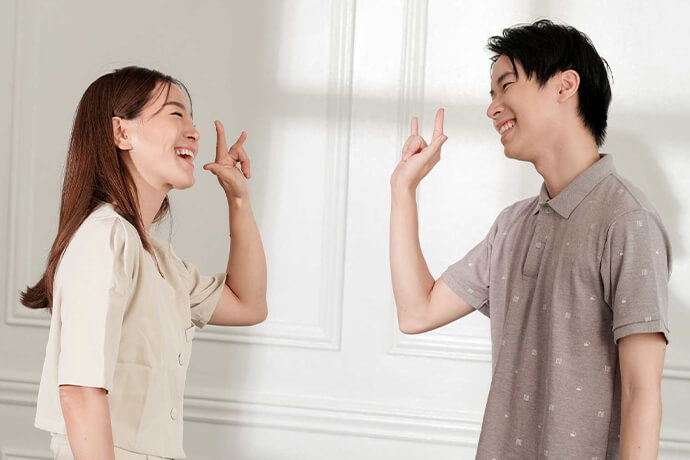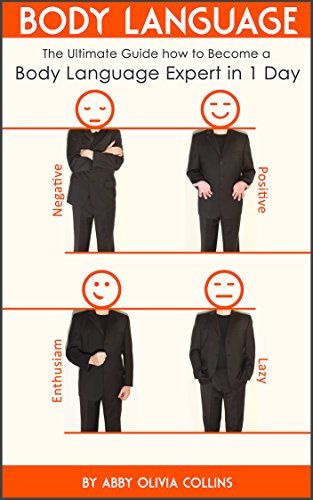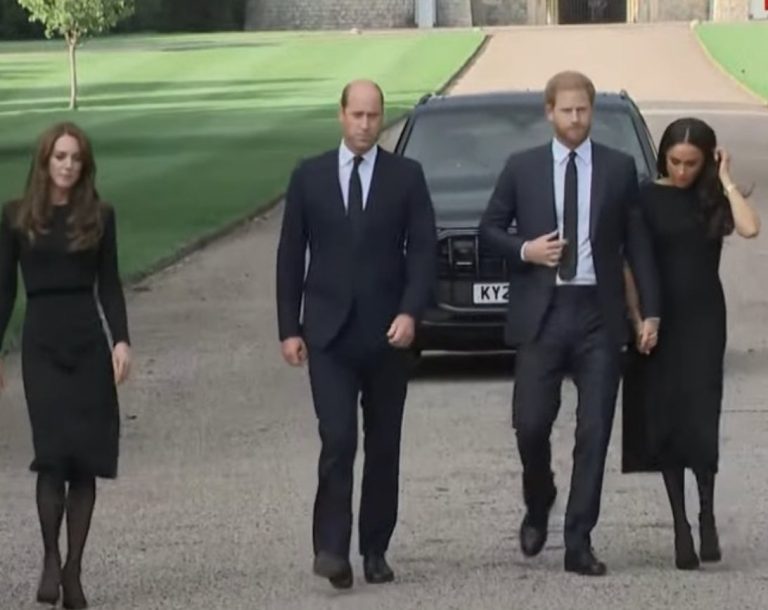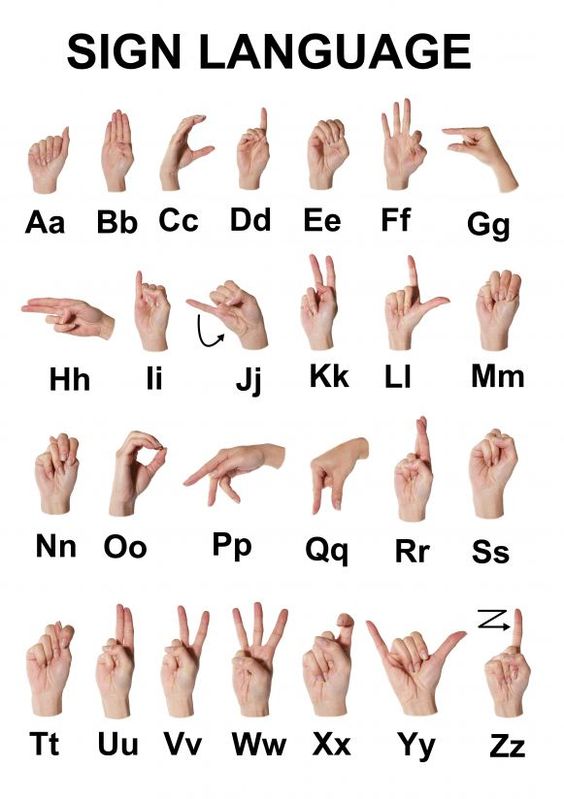How to Become an Expert in Body Language
Want to become an expert in body language? It’s a powerful tool for communication.
Understanding body language can improve your interactions. Body language speaks louder than words. It reveals true feelings and thoughts. By mastering body language, you can understand others better. This skill can help you in personal and professional life. It’s not just about reading others; it’s also about controlling your own signals.
Knowing what your body says can change how others see you. This guide will help you learn the secrets of body language. Let’s dive into the fascinating world of non-verbal communication.

Credit: www.tiktok.com
Introduction To Body Language
Body language is a powerful form of communication. It includes gestures, posture, and facial expressions. Understanding body language helps in better communication. Words are only part of the message. The rest comes from our body. People often trust non-verbal signals more than words. Learning body language is essential for effective interaction.
Body language shows true feelings. It can reveal if someone is happy, sad, or angry. Positive body language can build trust. It helps in making a good impression. Negative body language can create misunderstandings. Knowing body language helps in reading others. It also helps in expressing yourself better.
Good posture shows confidence. Slouching suggests disinterest. Eye contact shows attention and honesty. Avoiding it may seem rude. Smiling shows friendliness. Frowning indicates displeasure. Hand gestures can emphasize points. Too much movement can be distracting. Personal space is important. Respecting it shows good manners. Mirroring body language builds rapport. It shows empathy.
Reading Non-verbal Cues
Understanding body language helps in becoming an expert at reading non-verbal cues. Observe gestures, facial expressions, and posture to gain insights. Practice regularly to improve your skills.
Facial Expressions
Facial expressions say a lot without words. A smile means happiness. A frown means sadness. Raised eyebrows can show surprise. Narrowed eyes might mean anger. Understanding these cues helps in better communication. Different cultures may have different meanings. Always consider the context. Practice observing faces. Notice small changes. This will improve your skill over time.
Gestures
Gestures involve movements of hands or arms. A wave means hello or goodbye. Pointing can show direction or emphasis. Crossing arms might show defensiveness. Open palms usually mean honesty. Nodding means agreement. Shaking the head means disagreement. Watch for these signs in conversations. They give extra meaning to words. Practice makes perfect.
Understanding Posture And Stance
Open postures show confidence. Arms are not crossed. Legs are relaxed. This makes you look friendly. Closed postures show nervousness. Arms are crossed. Legs are tight. People may think you are shy.
Power poses make you feel strong. Stand tall. Keep your head up. Put your hands on your hips. Take up space. This can boost your confidence. People see you as a leader. Practice power poses daily. It helps in important moments. Like interviews or speeches.
The Role Of Eye Contact
Eye contact means different things in different cultures. In some places, it shows respect. In others, it can be seen as rude. For example, direct eye contact is common in Western countries. It shows confidence and interest. But in some Asian cultures, too much eye contact can be seen as aggressive. It’s important to know these differences. This helps in understanding and respecting others.
Eye contact can make you seem more confident. Looking someone in the eyes shows that you are paying attention. It also shows you are not afraid. This can be very powerful in conversations. Just remember not to stare too long. This can make people uncomfortable. Balance is key.
Interpreting Hand Movements
Hand gestures can tell a lot about a person’s feelings. An open palm often means honesty or openness. Crossed arms with closed hands show defensiveness. Waving can mean hello or goodbye. Pointing might be seen as rude in some cultures. Rubbing hands together shows anticipation or excitement. Some gestures are universal, but others vary by culture.
Some hand movements have hidden meanings. Touching the face can mean lying or nervousness. A clenched fist can show anger or frustration. Thumb up usually means good or okay. But in some places, it can be offensive. Knowing these gestures can help understand others better. Always consider the context and culture.

Credit: www.speakeragency.co.uk
Recognizing Microexpressions
Microexpressions are quick facial expressions. They show true feelings. These expressions last less than a second. Spotting them needs practice. Look at the eyes, mouth, and eyebrows. These areas change fast. Notice small twitches or movements. Study different emotions. Happiness, sadness, anger, and fear are key. Each emotion has unique signs. Practice with photos or videos. Pause and study faces. Repeat this often.
Understanding microexpressions helps in many fields. In interviews, it reveals true thoughts. Detecting lies becomes easier. It is useful for police and negotiators. Teachers understand students better. Doctors can spot patient fears. It improves communication skills. You connect with people more. Build trust and empathy. It helps in sales too. Read client interest. Respond better. Practice makes you better. Keep learning.
Improving Your Own Body Language
Pay close attention to how you stand and sit. Notice your hand movements and facial expressions. Observe your posture in the mirror. Ask friends for feedback on your body language. Record yourself to watch later. Reflect on how you feel in different settings. Recognize patterns in your body language.
Practice standing tall and relaxed. Keep your shoulders back. Make eye contact during conversations. Smile often to show friendliness. Use open gestures with your hands. Avoid crossing your arms. Nod to show you are listening. Mirror the body language of others subtly. Practice these techniques daily.
Advanced Techniques
Mirroring is a powerful technique. Copy the other person’s gestures. This creates a strong connection. Use it in conversations. It builds trust quickly. Mirror their body posture. Match their tone of voice. This helps them feel understood. Be subtle. Too much can seem odd. Practice in daily interactions. This will make it natural. Observe others closely. Notice their body language.
Anchoring links a feeling to a gesture. Repeat the gesture with the feeling. Over time, the feeling sticks. Use a unique gesture. It should be simple. Practice it often. This helps anchor the feeling. Use it in stressful times. It brings calm. Experiment with different gestures. Find what works best. Be consistent. This strengthens the anchor. Use it to stay confident.
Common Mistakes To Avoid
Many people overthink body language signals. This can lead to misinterpretations. Trying too hard can make you seem unnatural. It is important to stay relaxed. Observe, but do not overanalyze. Trust your instincts.
Context is crucial in understanding body language. A gesture can mean different things in different situations. Always consider the environment. Look at what is happening around you. This will help you interpret signals correctly.
Practical Applications
Understanding body language can improve business success. Strong eye contact builds trust. Open arms show you are approachable. Leaning slightly forward shows interest. Avoid crossing arms; it can seem defensive. Mirroring body language creates a connection. Nod slightly to show you are listening. A firm handshake shows confidence. Reading cues helps in negotiations.
Recognizing body language can enhance relationships. Smiling shows you are happy. Touching the arm can show affection. Facing someone fully shows attention. Mirroring their movements builds rapport. Pay attention to posture; it tells a lot. Eye contact shows you care. Nodding shows you understand. Avoid looking at your phone. Focus on the person. Small gestures matter.

Credit: www.amazon.com
Frequently Asked Questions
What Is Body Language?
Body language is non-verbal communication using physical behavior. This includes gestures, posture, and facial expressions. It often conveys emotions and intentions.
Why Is Body Language Important?
Body language enhances verbal communication. It helps you understand unspoken feelings and reactions, building better connections and trust.
How Can I Improve My Body Language?
To improve body language, practice good posture, maintain eye contact, and use appropriate gestures. Regularly observe and mimic confident individuals.
What Are Common Body Language Mistakes?
Common mistakes include crossing arms, avoiding eye contact, and slouching. These can convey disinterest, discomfort, or lack of confidence.
Conclusion
Becoming an expert in body language takes time and effort. Start by observing people closely. Practice reading gestures and expressions. Take notes and reflect on your observations. Attend workshops or read books on the subject. Consistent practice is key to improvement.
Remember, body language can enhance communication skills. Stay patient and keep learning. You’ll notice progress as you continue. Use these tips to grow more confident. Understanding body language benefits your personal and professional life. Keep practicing and stay curious. Your efforts will pay off.


